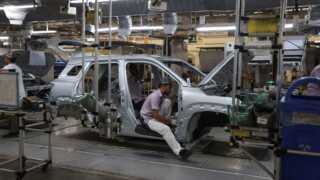For Ravindra Patki, Managing Partner at Vector Consulting Group, this mismatch between expectation and delivery time is not just a scheduling issue but a structural flaw. “Almost 80 per cent of respondents in our study admitted that delays are largely intrinsic, not external. The system itself slows you down,” he says. Also Read : Indian auto industry poised to drive next global manufacturing era: Takeuchi Too many projects, too few resourcesThe industry’s reflex has been to launch as many projects as possible in the hope that some will hit the market on time. But this shotgun approach has consequences. Too many parallel projects spread resources thin, slowing every initiative and leading to “half-cooked” prototypes being pushed prematurely into later stages. Engineering changes, which should ideally be caught at the design stage, spill over into production and even post-launch, driving up warranty costs, wasting manpower, and consuming already scarce R&D budgets. “Resources are not just about money,” notes Patki. “They include time and manpower, both of which get wasted in this process.” Chasing the ChineseThe problem, Patki argues, is not just about speed but also about innovation. While Indian companies struggle with execution bottlenecks, Chinese manufacturers are ploughing their gains back into R&D, building proprietary technologies that give them resilience and bargaining power in global markets. Also Read : Automotive industry shifts to software as new growth engine: Survey “If Indian component makers remain build-to-print suppliers, they will always be vulnerable to political shifts,” he warns. Proprietary design capability, by contrast, makes switching suppliers far more difficult. This is the competitive edge India desperately needs to build. The resource trapThe irony is that the auto sector’s obsession with juggling multiple projects leaves little capital for true innovation. “The moment we reverse this, and stop wasting resources, we free up the money and time needed for genuine R&D,” says Patki. Vector Consulting’s work with a two-wheeler manufacturer illustrates the point. By rationalising project workflows, the company increased output five-fold with the same manpower. Lead times crashed, costs dropped, and innovation pipelines finally had breathing space. Technology choices and the China questionThe debate on technology strategy is even more pressing. Global peers are largely focused on one dominant path, EVs or ICE, while India is hedging bets across EVs, hybrids, CNG, hydrogen and biofuels. Patki is clear that the bigger threat lies in overdependence on China for rare earth magnets and lithium-ion cells. Mining rare earths domestically is fraught with environmental and political challenges, given India’s dense population. “Instead of chasing China’s model, India should invest in magnet-less motors and alternative technologies,” he suggests. Companies like Sona Comstar and Ola are experimenting in this direction, but scale remains limited. Chips, software and the next frontierSemiconductors are another bottleneck. India has the mineral base to support electronics manufacturing, but the ecosystem to make chips at scale is still fragile. Patki believes disrupting established global players at the top of the chain will be tough, but India can create niches by being more agile in emerging technologies such as hydrogen or advanced biofuels. Meanwhile, reducing reliance on imports of scrap, fuel, and other inputs can free up government funds to invest in chip and semiconductor ecosystems. “China’s success is not just industry-led, it is also government-backed. For India to compete, released cash must flow into long-term technological bets,” he says. Exports and resilienceTrade headwinds add another layer of complexity. US tariffs may threaten a slice of India’s $6 billion auto component exports, but Patki points out that only a quarter of this volume is at immediate risk, since much of it is proprietary or single-source. Still, the lesson is clear: low-cost manufacturing alone cannot secure India’s future. “Textiles can be replaced overnight, but technology-driven industries are harder to dislodge,” he explained. For the Indian auto industry, the stakes could not be higher. Shrinking product cycles, rising technology costs, and geopolitical risks are all converging to demand a reset. Patki points out that fewer but better projects, greater investment in R&D, and a sharper focus on proprietary technology builds resilience. Get insights into Upcoming Cars In India, Electric Vehicles, Upcoming Bikes in India and cutting-edge technology transforming the automotive landscape. First Published Date: 30 Sept 2025, 12:36 pm IST
Source: hindustantimes.com






